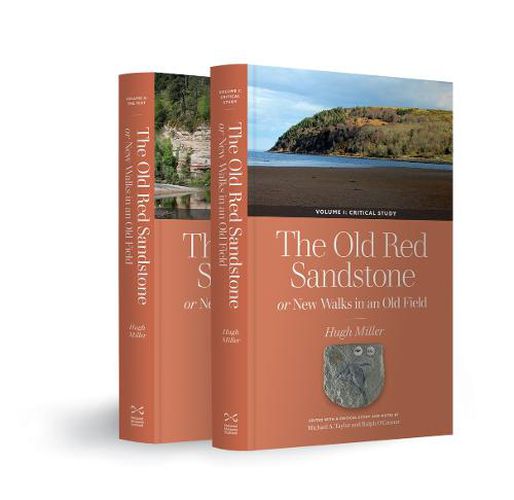Readings Newsletter
Become a Readings Member to make your shopping experience even easier.
Sign in or sign up for free!
You’re not far away from qualifying for FREE standard shipping within Australia
You’ve qualified for FREE standard shipping within Australia
The cart is loading…






Hugh Miller was born in Cromarty, Ross-shire in 1802. A self-taught stonemason, writer, social crusader and geologist, his name was known in his lifetime not just in Scotland but across the English-speaking world. This facsimile edition of his classic book, first published in 1841, concerns ‘The Old Red Sandstone’, an assemblage of rocks in the North Atlantic region, largely of Devonian age. In a pre-Darwinian era, Miller was able to reconcile his geological knowledge with his religious beliefs - he saw geology as evidence, not as disproof, of godly design. His writing is still immensely readable (he was known as ‘the poet of geology’) and as novelist James Robertson says in his Foreword ‘ … if it tells us less than we now know about our planet’s geology it tells us much about how we have gained that knowledge, and how science is and can only ever be a part of wider human culture.
$9.00 standard shipping within Australia
FREE standard shipping within Australia for orders over $100.00
Express & International shipping calculated at checkout
Stock availability can be subject to change without notice. We recommend calling the shop or contacting our online team to check availability of low stock items. Please see our Shopping Online page for more details.
Hugh Miller was born in Cromarty, Ross-shire in 1802. A self-taught stonemason, writer, social crusader and geologist, his name was known in his lifetime not just in Scotland but across the English-speaking world. This facsimile edition of his classic book, first published in 1841, concerns ‘The Old Red Sandstone’, an assemblage of rocks in the North Atlantic region, largely of Devonian age. In a pre-Darwinian era, Miller was able to reconcile his geological knowledge with his religious beliefs - he saw geology as evidence, not as disproof, of godly design. His writing is still immensely readable (he was known as ‘the poet of geology’) and as novelist James Robertson says in his Foreword ‘ … if it tells us less than we now know about our planet’s geology it tells us much about how we have gained that knowledge, and how science is and can only ever be a part of wider human culture.